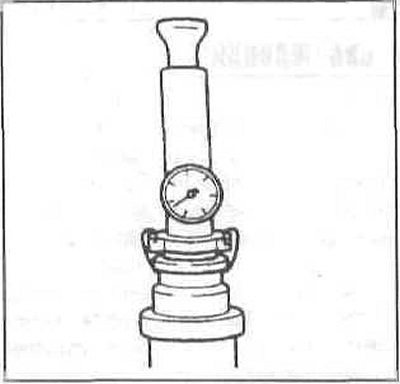Warm up the engine to operating temperature so that the temperature gauge on the instrument panel shows the normal coolant temperature.
Check the coolant level and top up if necessary.
Remove the expansion tank cap.
Attention: On a hot engine, before removing the cover, cover it with a thick cloth to avoid scalding hot liquid or steam. Remove the cover only when the coolant temperature is less than +90°.
Install a control device with an adapter on the neck of the expansion tank. Apply a pressure of about 1.0 bar using the instrument's hand pump. If the pressure drops by more than 0.1 bar within 2 minutes, then you need to find leaks and eliminate them. Leaks can be identified by the escaping coolant.
If the pressure drops, but there are no signs of coolant leaks, then this indicates internal coolant leaks in the engine, for example, through a damaged cylinder head gasket or through a crack in the block.

To check the safety valve in the radiator cap, install a control device on the cap. Pressurize with a hand pump. At a pressure of approx. 2.0 bar, the safety valve should open. If not, then the cover needs to be replaced.
Check the radiator cap with a vacuum. At a vacuum of 0.1 bar, the vacuum valve in the radiator cap should open.
